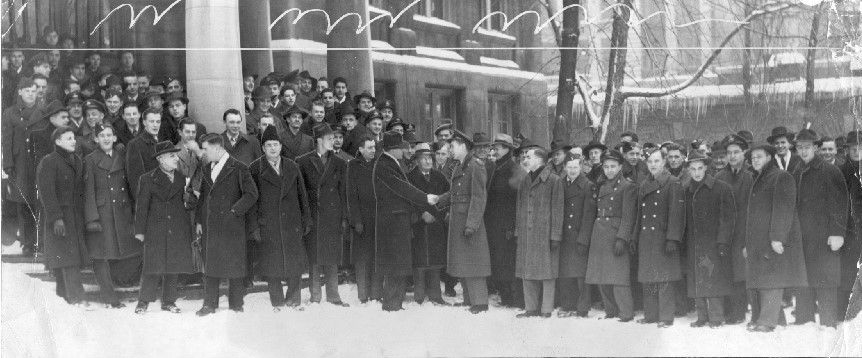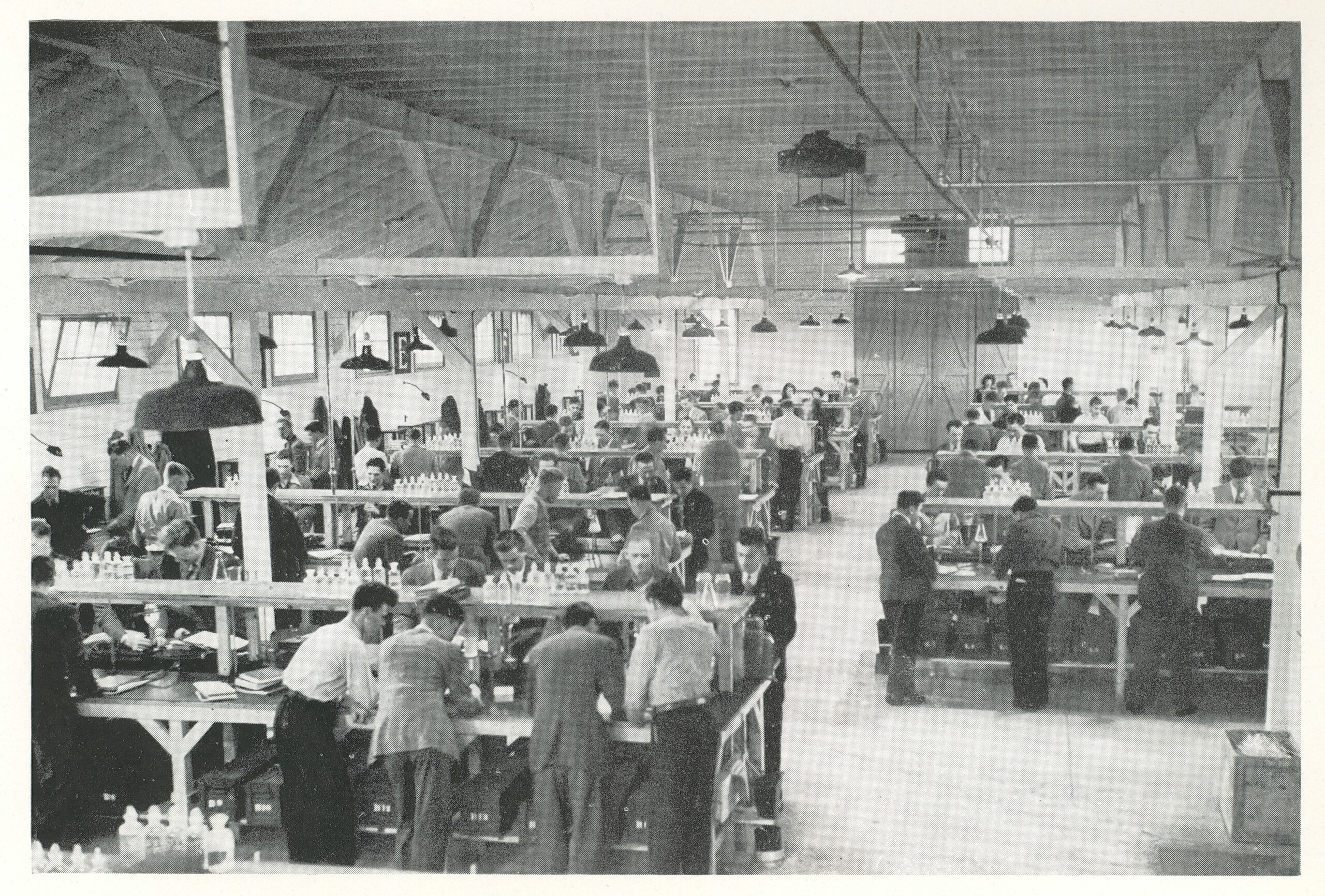
Throughout the Second World War, the McGill community made vital contributions to the national effort through research, teaching and service. Over 5,500 faculty, staff, students and alumni enlisted in the armed forces. As the war came to an end, a grateful country offered veterans returning to civilian life the opportunity to attend university. Eighty years ago this month, McGill announced its participation in this bold national plan, leading to one of the most notable achievements in the university’s history.
On Monday, Jan. 8, 1945, even before the Second World War’s end, 233 veterans arrived at McGill to begin studies that would lead not only to substantial changes in their own lives, but to the direction of the University itself.
Detailed planning for the veterans’ return had begun not long after the war’s outbreak in 1939. The years following the First World War had brought economic hardship and uncertainty to returning veterans; this had led to social and political unrest. The generation of Canadian leaders who had experienced that era were determined to avoid a similar outcome 25 years later.
Central to the shaping of Canada’s postwar policy was McGill’s Dr. F. Cyril James, appointed Principal in 1940. A highly regarded economist, in 1941 he was named chair of the national Advisory Committee on Reconstruction. It helped create the outline for a postwar Canada, including programs for returning veterans.
McGill enrolment doubles
In 1944, the Department of Veterans Affairs was created, and, by 1945, a range of benefits became available under the Veteran’s Charter. The Charter offered over a million ex-servicemen and service women the opportunity to obtain an education, re-enter the work force, build homes, buy land and start businesses. The education option included funding for tuition, fees and basic living costs for study at Canadian universities and schools for qualified applicants.
The McGill Senate adopted a policy that all academically eligible veteran applicants from Canadian, Commonwealth and U.S. forces would be accepted. The response to the offer was overwhelming. McGill’s initial veteran intake, that began with that modest cadre of 233 in January 1945, many still in uniform, would swell to 3,991 male and female veterans enrolled by 1947, doubling overall enrolment over the same two-year period to 8,000 students.
The response required many changes to the campus and even to how McGill would operate. Where would so many newly arriving students be taught, housed and fed?
Dramatic impact on McGill

To meet the challenge, McGill would have to come up with some creative solutions.
One of the most dramatic changes was the shift from two terms to three terms per year, with the addition of a full summer session. Teaching hours were also lengthened and additional staff hired. A whole new campus was quickly established: Sir William Dawson College in St. Jean, on the site of an air force training base wrested from the Royal Canadian Air Force, began operation in September 1945. Another air force facility in Lachine was allocated to McGill and became the Peterson Residences, modified to accommodate married veterans. Wartime barracks at Macdonald College were adapted to accommodate over 200 students. All of these efforts were necessary, driven by the keen shortage of housing in Montreal during the postwar years.
The impact on Faculties was dramatic. The School of Commerce grew to six times its previous size, Arts tripled, and most other Faculties doubled in enrolment. New schools and programs were added to meet the demand.
New space on the downtown campus was secured, as well. Morrice Hall, Strathcona Hall, Beatty Hall, Duggan Hall and the Allan Memorial were among the donated and purchased properties added to the expanded campus. Teaching staff grew from 473 in 1939 to 894 in 1947.
High success rate among veterans
There were other changes that can still be seen on today’s campuses. The conditions of the Veteran’s Charter required not only an educational component, but also the provision of student support such as counselling, off-campus housing, advising and daycare for infants and children. McGill also provided supplemental funding and support for the veterans, including review, preparatory and extension courses that allowed this cohort to achieve a very high success rate. Concerns about the mix of older and younger students in the classroom quickly evaporated once the term began. In fact, many professors praised the veterans’ dedication to their studies.
By 1950, most of the veterans had completed their studies and the newly expanded McGill was provided with a sense of a larger role it could play. The program was successful in enabling the education of returning veterans, and in serving as a model for the provision of advanced education to a wider population. Public perceptions and expectations of the role of universities in Canadian society had also begun to change as a result.
Across Canada, more than 51,000 veterans of the Second World War received a university education through the Veterans Charter at a total cost of over $2 billion in current dollars.
Looking back many years later, Cyril James declared, “It was money well spent.”
